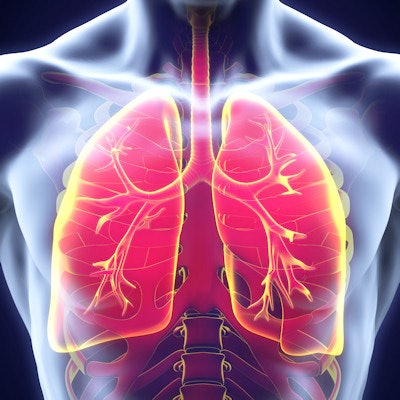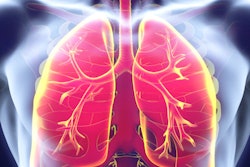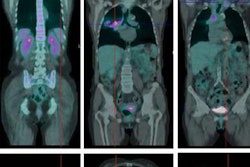
Performing frequent CT scans after surgery for non-small cell lung cancer (NSCLC) may not necessarily improve overall patient survival rates, according to findings presented at the European Society for Medical Oncology (ESMO) 2017 congress in Madrid.
Current protocol dictates that patients should be monitored with CT scans every three to six months for the first two years following NSCLC resection. But data presented at ESMO 2017 by lead author Dr. Virginie Westeel, PhD, of Hôpital Jean Minjoz in Besançon, France, indicated that biannual postsurgery CT scans did not necessarily prove beneficial to the overall survival of NSCLC patients.
"A conservative point of view would be to do a yearly CT scan, which might be of interest over the long term," Westeel said in a statement. "However, doing regular scans every six months may be of no value in the first two postoperative years."
NSCLC is, by far, the most common form of lung cancer. And yet the best practices for follow-up care after surgical treatment remain unsupported by large-scale clinical evidence. Some guidelines recommend follow-up with clinic visits and chest CT scans for NSCLC that has been completely resected, but evidence is lacking to support these recommendations, the researchers believe.
In an effort to ground postsurgery follow-up care for NSCLC in clinical trials, the research team investigated the effect of follow-up CT scans on the overall survival rate of 1,775 patients with NSCLC from January 2005 to November 2012.
Patients were randomly assigned to receive either a chest x-ray alone or an x-ray in addition to a CT scan every six months for the first two years after receiving surgical treatment, and then once a year for the following five.
The researchers found that there was no statistical difference between the two methods of follow-up care in terms of overall survival.
| Effect of imaging follow-up on NSCLC patient survival | ||
| Chest x-ray | Chest x-ray + CT | |
| Overall survival | 8.2 years | 10.3 years |
| 3-year disease-free survival rate | 77.3% | 76.1% |
| 8-year overall survival rate | 51.7% | 54.6% |
"Because there is no difference between arms, both follow-up protocols are acceptable," Westeel said.
The finding suggests a notable departure from what the majority of medical societies and clinical practice guidelines recommend, according to the researchers.
Although performing CT scans on NSCLC patients after surgery did not demonstrate statistically significant benefits, the trend toward better survival in the CT group suggests longer follow-up may eventually reveal a benefit to this approach, said ESMO spokesperson Dr. Floriana Morgillo.
The researchers concluded that a longer patient follow-up period is necessary to pinpoint the potential long-term benefit of using CT scans after NSCLC surgical procedures. This may very well pave the way for determining the relevance of CT scans in patient care after NSCLC resection.




















